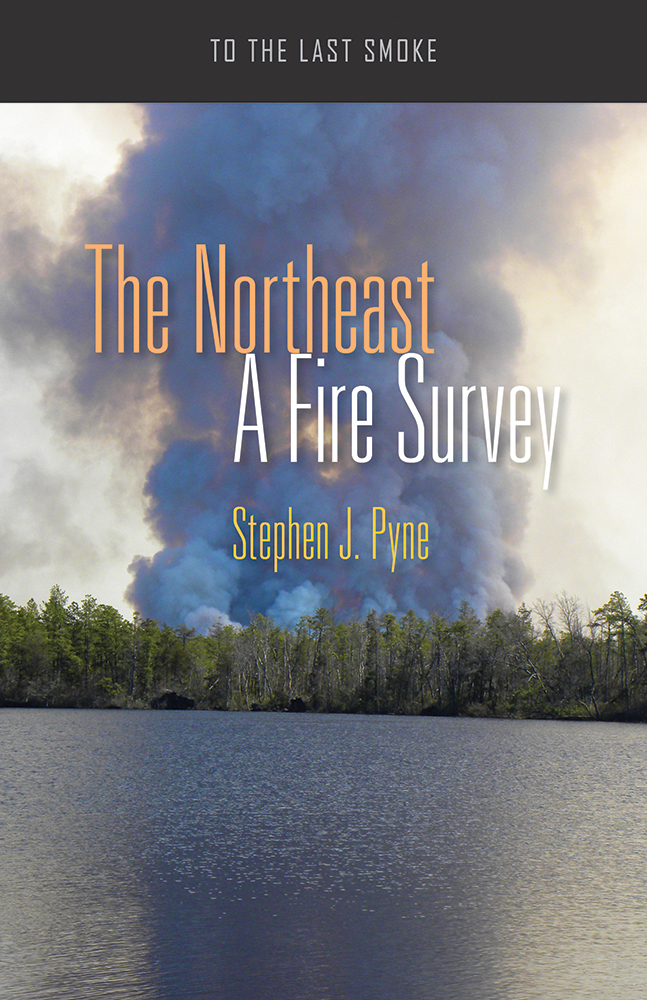The Northeast
A Fire Survey
Paperback ($18.95), Ebook ($18.95)
Buy
Repeatedly, if paradoxically, the Northeast has led national developments in fire. Its intellectuals argued for model preserves in the Adirondacks and at Yellowstone, oversaw the first mapping of the American fire scene for the 1880 census, staffed the 1896 National Academy of Sciences forest commission that laid down guidelines for the national forests, and spearheaded legislation that allowed those reserves to expand by purchase. It trained the leaders who staffed those protected areas and produced most of America’s first environmentalists.
The Northeast has its roster of great fires, beginning with dark days in the late 18th century, followed by a chronicle of conflagrations continuing as late as 1903 and 1908, with a shocking after-tremor in 1947. It hosted the nation’s first forestry schools. It organized the first interstate (and international) fire compact. And it was the Northeast that pioneered the transition to the true Big Burn—industrial combustion—as America went from burning living landscapes to burning lithic ones.
In this new book in the To the Last Smoke series, renowned fire expert Stephen J. Pyne narrates this history and explains how fire is returning to a place not usually thought of in America’s fire scene. He examines what changes in climate and land use mean for wildfire, what fire ecology means for cultural landscapes, and what experiments are underway to reintroduce fire to habitats that need it. The region’s great fires have gone; its influence on the national scene has not.
The Northeast: A Fire Survey samples the historic and contemporary significance of the region and explains how it fits into a national cartography and narrative of fire.
Included in this volume:
How the region shaped America’s understanding of and policy toward fire
How fire fits into the region today
What fire in the region means for the rest of the country
What changes in climate, land use, and institutions may mean for the region
The Northeast has its roster of great fires, beginning with dark days in the late 18th century, followed by a chronicle of conflagrations continuing as late as 1903 and 1908, with a shocking after-tremor in 1947. It hosted the nation’s first forestry schools. It organized the first interstate (and international) fire compact. And it was the Northeast that pioneered the transition to the true Big Burn—industrial combustion—as America went from burning living landscapes to burning lithic ones.
In this new book in the To the Last Smoke series, renowned fire expert Stephen J. Pyne narrates this history and explains how fire is returning to a place not usually thought of in America’s fire scene. He examines what changes in climate and land use mean for wildfire, what fire ecology means for cultural landscapes, and what experiments are underway to reintroduce fire to habitats that need it. The region’s great fires have gone; its influence on the national scene has not.
The Northeast: A Fire Survey samples the historic and contemporary significance of the region and explains how it fits into a national cartography and narrative of fire.
Included in this volume:
How the region shaped America’s understanding of and policy toward fire
How fire fits into the region today
What fire in the region means for the rest of the country
What changes in climate, land use, and institutions may mean for the region
 The University of Arizona Press
The University of Arizona Press

